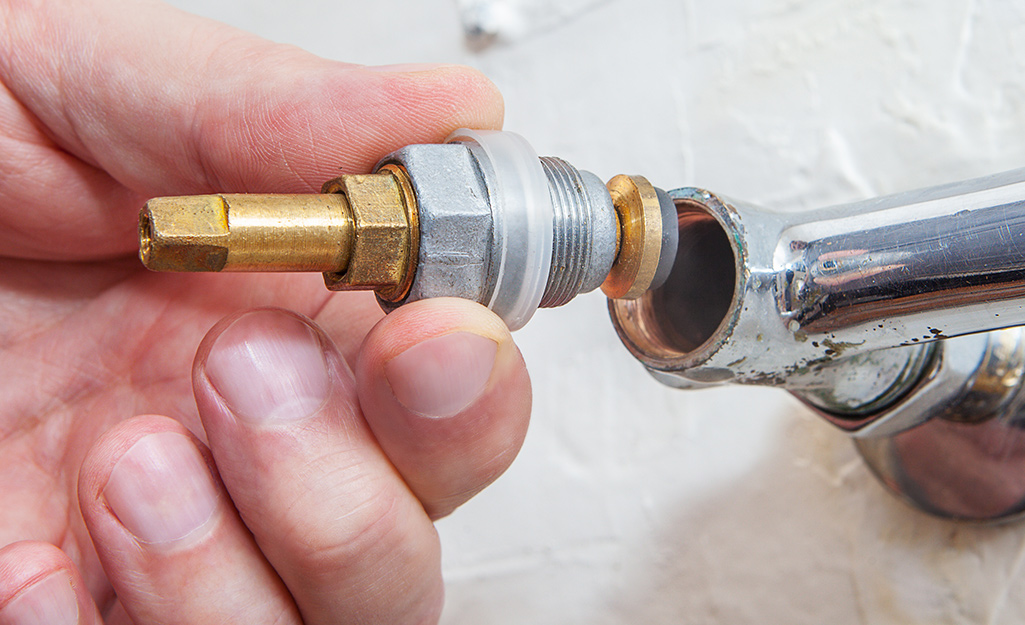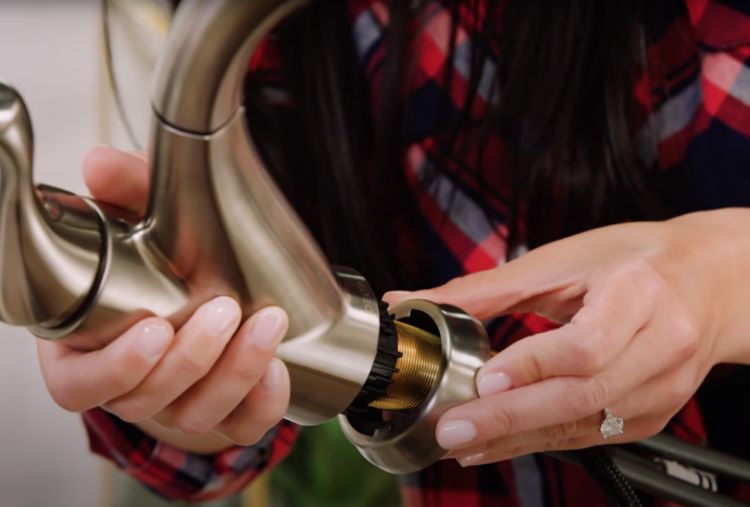Discovering the Significance of Resolving a Broken Faucet
Discovering the Significance of Resolving a Broken Faucet
Blog Article
This post underneath about 4 Common Reasons for a Leaky Faucet is indeed fascinating. You should take a look.

Leaking faucets could seem like a minor trouble, but their impact surpasses simply the aggravation of the sound. From wasting water to sustaining unneeded economic costs and health and wellness risks, neglecting a dripping tap can result in various repercussions. In this short article, we'll look into why it's important to resolve this typical family problem quickly and effectively.
Wastefulness of Water
Ecological Effect
Trickling taps add considerably to water waste. According to the Environmental Protection Agency (EPA), a solitary tap leaking at one drip per second can squander greater than 3,000 gallons of water annually. This not only pressures water sources yet likewise affects ecosystems and wild animals depending on them.
Financial Prices
Increased Water Costs
Past the ecological impact, trickling taps can blow up water bills substantially. The gathered wastage gradually translates into greater utility expenditures, which can have been prevented with timely repair work.
Prospective Residential Property Damage
In addition, long term leaking can bring about damage to components and surface areas surrounding the tap. Water accumulation can cause staining, deterioration, and even architectural issues if left neglected, resulting in additional repair service expenses.
Health Problems
Mold And Mildew and Mildew Growth
The constant visibility of wetness from a dripping tap creates a suitable setting for mold and mold development. These fungi not just endanger interior air high quality however also present wellness threats, specifically for people with respiratory problems or allergies.
Waterborne Illness
Stagnant water in dripping taps can become a breeding ground for bacteria and other virus, boosting the threat of waterborne conditions. Pollutants such as Legionella bacteria prosper in stagnant water, possibly resulting in significant health problems when consumed or inhaled.
Do it yourself vs. Specialist Repair work
Benefits and drawbacks of DIY Repair Service
While some might try to fix a trickling faucet themselves, do it yourself repair work feature their own set of obstacles. Without correct knowledge and devices, do it yourself attempts can aggravate the concern or cause insufficient fixings, extending the trouble.
Advantages of Hiring a Specialist Plumber
Hiring an expert plumber makes certain that the underlying root cause of the dripping faucet is attended to effectively. Plumbers possess the expertise and tools to identify and fix tap issues successfully, conserving time and reducing the threat of further damages.
Step-by-Step Guide to Dealing With a Dripping Faucet
Tools Required
Prior to attempting to deal with a dripping tap, gather the required devices, consisting of an adjustable wrench, screwdrivers, replacement components (such as washing machines or cartridges), and plumber's tape.
Common Tap Issues and Their Solutions
Determine the type of faucet and the details concern triggering the drip. Typical issues include damaged washers, rusty valve seats, or faulty O-rings. Refer to maker directions or on the internet tutorials for detailed guidance on repairs.
Safety nets
Regular Upkeep Tips
To stop dripping taps, execute routine upkeep such as cleansing aerators, evaluating for leaks, and replacing worn-out parts quickly. In addition, think about mounting water-saving devices or upgrading to more efficient components.
Significance of Prompt Services
Addressing leaking taps as soon as they're noticed prevents further water wastefulness and possible damage, inevitably saving both water and cash in the long run.
Impact on Residential Or Commercial Property Value
Understanding of Well-Maintained Residential Property
Maintaining a building in good condition, including resolving upkeep issues like dripping taps, boosts its perceived value and charm amongst possible purchasers or lessees.
Impact on Resale Worth
Properties with well-kept plumbing fixtures, consisting of faucets, command higher resale values in the property market. Resolving dripping faucets can add to a positive impact during home evaluations and arrangements.
Environmental Obligation
Private Contribution to Conservation
Taking obligation for taking care of leaking faucets straightens with broader initiatives toward water preservation and environmental sustainability. Every person's actions jointly make a considerable influence on maintaining priceless sources.
Lasting Living Practices
By prioritizing prompt repair work and taking on water-saving practices, people contribute to sustainable living practices that profit both present and future generations.
Conclusion
Resolving a dripping tap surpasses plain convenience; it's a crucial step toward preserving water, minimizing financial costs, and safeguarding health and building. Whether via do it yourself fixings or specialist aid, acting to take care of trickling faucets is a small yet impactful method to advertise liable stewardship of resources and add to a healthier, more sustainable future.
How to Fix a Leaky Faucet: Step-by-Step Repair Guide
A leaky faucet may seem like a simple annoyance, but if it's not fixed promptly, that leak could cost hundreds to potentially thousands. From water damage to mold, mildew, and high water bills, even a tiny leak can be catastrophic if left unattended. Damage like this can even affect the overall value of your home, so it's important to take the right approach for leaky faucet repair. You may need the help of a plumber in some cases, but we've got a few tips you can try on how to fix a leaky faucet before calling the pros.
Four Faucet Types
When you're learning how to fix a leaky faucet, the first step is knowing what kind of faucet you're working with! There are four common types.
Cartridge Faucets
Cartridge faucets come in one- or two-handled varieties. In one-handled cartridge faucets, hot and cold water combines in a single cartridge. In the two-handled versions, hot and cold water are controlled separately and mixed in the faucet.
Ball Faucets
Ball faucets have a single lever you push up and down to adjust the pressure and rotate to change the temperature. A slotted metal ball controls the amount of water allowed into the spout.
Compression Washer Faucets
They're the oldest type of faucet, but they're still used in many homes — especially older ones. Compression faucets have two separate handles that, when turned, raise or lower the washer that seals a water valve. This valve stops water from flowing through the faucet when it is turned off.
Disc Faucets
Disc faucets rarely need to be repaired due to their maintenance-free design. The water flow is controlled by two discs — the upper one raises and lowers against a fixed lower disc, creating a watertight seal. If your disc faucet starts leaking, you may need to replace the seals or clean residue buildup from the inlets.
Fixing a Leaky Faucet
Step 1: Turn Off the Water
Whether you're learning how to fix a leaky bathtub faucet or how to fix a leaky kitchen faucet, always turn off the water supply to your working area when you're fixing a leak. The last thing you want is a flood added to your list of things to fix.
Look for the shutoff valves below your sink or around the tub and turn them clockwise to stop the water flow. If your faucet doesn't have shutoff valves, you may need to turn off the water for the whole house. Check to make sure it's off by turning the faucet on. If nothing comes out, you're ready to start the repair.
Step 2: Take Apart the Faucet
How you disassemble your faucet depends on the type of fixture you have. You can use a flathead screwdriver to remove the caps on top of the handle or handles for cartridge and compression faucets. Inside, you should see handle screws. Unscrew these with a screwdriver to remove the handle.
Disc- and ball-style faucets will typically have an inlet screw near the handle, and removing that will reveal the interior of the faucet.
Detach the Valve Stem
For cartridge- and compression-style faucets, you'll see the inner valve stem or cartridge once you remove the faucet handles. If you have a compression faucet, unscrew the brass valve stem. If you have a cartridge faucet, pull out the cartridge. If your cartridge has been in place for a while, it may require some tools or extra force to remove it due to mineral deposits.
Examine and Replace Parts
Once you've removed the parts, check them out to confirm what needs to be replaced. You may see corroded rubber washers, O-rings, stems, or cartridges. On a ball-style faucet, check the seats and springs for damage.
If you need to repair a leaky disc faucet, check the inlet and seals on the lower disc.
Once you determine what parts must be replaced, visit your local hardware store. Bring the damaged parts with you to ensure you can purchase the correct components to replace them.
Clean Valves and Faucet Cavity
If you've removed a stem or cartridge, you may notice mineral buildup in the faucet's threads. Use white vinegar to clean the valve seat by soaking it for a few minutes, then scrub it away with a soft toothbrush and rinse with warm water. You can also clean the interior of the faucet in the same way.
Reassemble the Faucet
Once your faucet is cleaned and the required parts have been replaced, it's time to reassemble it. Put the pieces back together and slowly turn the water supply back on. Doing this slowly is crucial because too much initial water pressure can damage the new hardware you've just installed.
https://homewarranty.firstam.com/blog/how-to-fix-leaky-faucet

Do you appreciate reading up on 4 Common Reasons for a Leaky Faucet? Place a remark further down. We would be pleased to find out your thoughts about this write-up. Hoping that you visit us again in the future. Are you aware of someone else who is intrigued by the subject? Take a moment to promote it. I praise you for being here. Come back soon.
Report this page